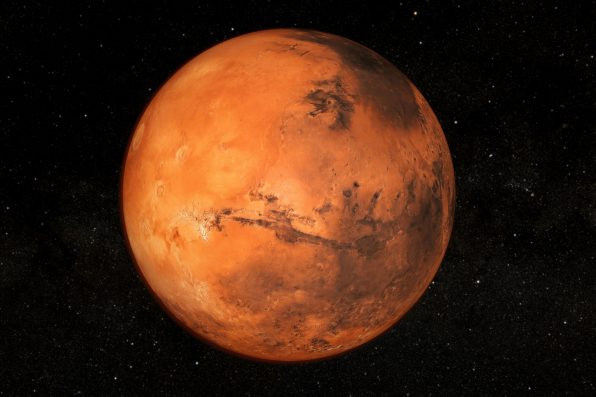Dark Cracks That Resemble Spiders Are Scattered Across The Surface Of Mars, And Scientists Have Recreated These Strange Structures For The First Time

The surface of Mars is littered with dark cracks that resemble spiders. On Earth, NASA scientists have successfully recreated these “spiders” to help them learn more about the mysterious structures.
The “spiders on Mars” refer to a geological feature in several locations on the Red Planet. It is known as araneiform terrain, and hundreds of dark cracks and lines appear in these places. The structures are tightly grouped together and can be over 3,300 feet wide.
When viewed from above, they look like a bunch of spiders crawling across the planet’s surface. The spiders were first observed in 2003. Ever since then, these features have continued to appear in satellite images.
Initially, their origin was a total mystery, but scientists were able to determine that they formed when carbon dioxide ice on the planet’s surface abruptly turned into gas without melting into liquid first. A 2021 study demonstrated how the process worked.
Sunlight would shine through gaps in the CO2 ice during the Martian spring. The sunlight heated up the ground below the ice, causing some of the ice to transform into gas. As a result, there is a buildup of pressure within the ice slabs. When the pressure became too much, the ice cracked, allowing the gas to escape.
As the gas floats out from the ice, it takes dark dust and sand from the surface of the planet, leaving behind spider-like cracks that show up when the ice completely melts during the Martian summer. The whole process is known as the Kieffer model.
In a new study, a team of researchers simulated the process in a specialized laboratory chamber called the Dirty Under-vacuum Simulation Testbed for Icy Environments (DUSTIE). They recreated the low pressure and temperature conditions on Mars, resulting in a temperature of -301 degrees Fahrenheit.
The team put a simulated Martian soil into the chamber and covered it with CO2 ice. Then, they used a lamp placed beneath the soil to heat up the mixture.
“It took many tries before [finding] just the right conditions for the ice to become thick and translucent enough for the experiments to work,” stated NASA representatives.

lermand7 – stock.adobe.com – illustrative purposes only
Finally, the ice cracked open, and the gas leaked out of the hole for about 10 minutes until the frozen CO2 disappeared and left one of the spiders behind.
The recent study also revealed a new step in the Kieffer model. The ice formed within the ground as well, which caused the ground to crack open along with the ice. It could explain why the “legs” of the spiders follow such a zig-zag pattern.
Moving forward, the researchers plan to conduct similar experiments to figure out why the spiders develop in certain places on Mars and why there don’t seem to be any new ones forming.
The study was published in The Planetary Science Journal.
Sign up for Chip Chick’s newsletter and get stories like this delivered to your inbox.
More About:News